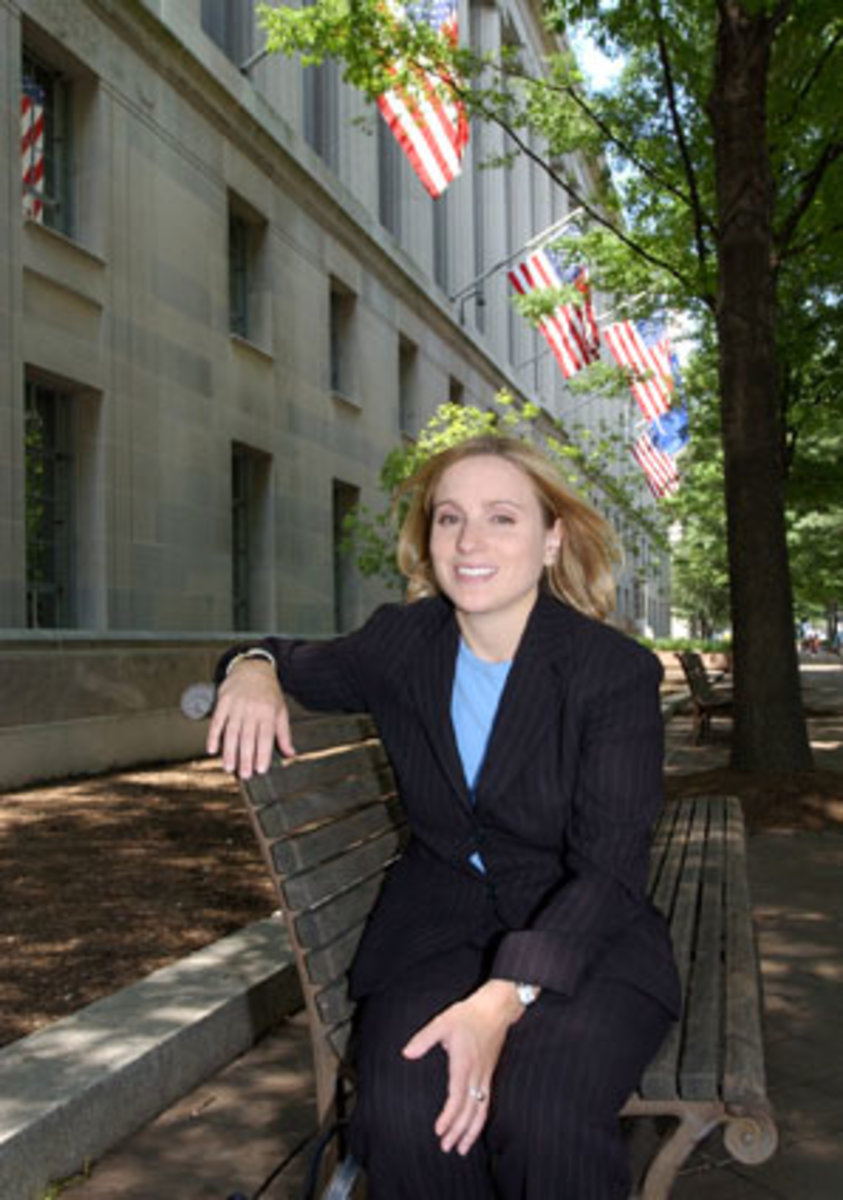Catching up with Kerri Strug


Twelve years after she vaulted into America's hearts, Kerri Strug would like the world to know one thing: Her ankle is just fine.
"It's funny, people tend to freeze [me] in time," says Strug from her office at the Department of Justice in Washington, D.C.
The fact that she hasn't grown much taller and that her voice hasn't changed since the 1996 Summer Games in Atlanta probably doesn't help. Really, it's more that the image of Strug, standing on one foot, arms raised in a V over her head, trying to force a smile through the pain of landing a Yurchenko with 1½ twist on an ankle with two torn ligaments, is unforgettable.
These days, Strug is working as a program manager in the Office of Juvenile Justice and Delinquency Prevention, part of a team that awards federal grants to programs geared toward helping at-risk youth. Helping children has been something Strug has always wanted to do. After graduating from Stanford with a master's degree in social psychology, Strug briefly worked as a teacher in San Francisco before accepting a presidential appointment in Student Correspondence at the White House. She moved to the Treasury Department in 2004 before landing her current job in March.
"If you told me I'd be working as a program manager in the OJJDP back when I was in Atlanta, I would've laughed," Strug said, "But at the same time I think I also knew I wasn't going to be a gym coach or owner. It was important for me to prove to myself and to others that I can be successful in other arenas as well."
While she still occasionally works at summer clinics and camps, Strug is quick to mention gymnastics are no longer the focus in her life. She's too busy enjoying everything Washington has to offer, from cultural events to concerts to Wizards games. She routinely goes to national meets and has worked for media companies during the Summer Olympics.
Strug admits that it wasn't easy for her to get to a point where life without gymnastics felt normal. "My entire life, all I wanted to do was go to the Olympics and win a gold medal," she said. "Then I started college [at UCLA] a few weeks later, and that was a transition. I was used to somebody controlling every move, telling me where to be and what to do and how to do it. The first couple months were sort of tough." Juggling school and her professional obligations made adjusting to life at UCLA difficult.
Immediately following the Games, Strug found herself swirling in more media attention, including cameos on Saturday Night Live ("Young men my age know me better for that than the vault," she said) and Beverly Hills 90210. Her picture appeared on the front of the Wheaties box. "I sort of lived in a bubble, so I didn't know really how big [a deal all of that] was," she said. Strug was spending four days a week on tour for months after the Olympics, performing for crowds across the country. But the constant activity, she admits, hampered the healing of her ankle. It took about nine months to fully heal.
The ankle is fine now. Perfectly fine. So is Kerri Strug, with her job, a busy life in the nation's capital and indelible athletic memories for a lifetime.
